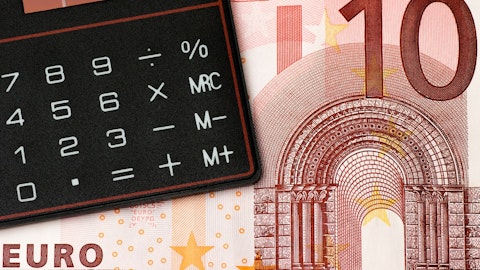McDonald’s Corporation (NYSE:MCD) Systems (the precursor to McDonald’s Corporation) was founded in 1955 when Ray Kroc went into business with brothers Dick and Mac McDonald who ran a small but successful hamburger restaurant.
Today, McDonald’s is anything but small. The company is the largest restaurant in the world, with a market cap greater than $100 billion and over 36,000 locations in more than 100 countries around the world.
It’s also the most popular restaurant stock among the elite investors that we track at Insider Monkey, 81 of which were long McDonald’s on June 3, holding $6.28 billion worth of its shares at that time, which totaled 6.90% of the iconic quick service restaurant’s common stock. While sentiment for the stock did fall during the second quarter, as ownership fell from 89 during the second quarter, there were several notable investors adding more shares of McDonald’s to their portfolios. Among them were billionaire Daniel S. Och of OZ Management, who upped his holding by 90% to 6.97 million shares, and Zach Schreiber of Point State Capital, who opened a new position containing 4.55 million shares.

You wouldn’t think an established hamburger business would be capable of rapid growth. From 2002 through 2011 McDonald’s did just that – realizing a compound earnings-per-share growth rate of 16.6% a year.
McDonald’s struggled in the late 1990’s and early 2000’s under CEO Jack Greenberg. Greenberg initiated a ‘made for you’ campaign that increasedcooking times, resulting in negative growth for McDonald’s. Jack Greenberg was replaced at the beginning of 2003 by Jim Cantalupo,
Cantalupo was only CEO of McDonald’s from 2003 to April of 2004, when he died suddenly and tragically of a heart attack. Despite his short tenure, Cantalupo is credited with turning around McDonald’s. He didn’t do anything revolutionary. He focused on cleanliness, quality, and consistency. He slowed store expansion (which was cannibalizing sales), eliminated unprofitable stores, and stopped engaging in absurd price wars with Burger King.
Jim Skinner took over as CEO when Cantalupo passed. Skinner’s focus was similar to Cantalupo’s. Skinners (successful) plan was to:
“(Put) the focus on the customer and the restaurants, and the absolutely relentless focus on improving existing restaurants”.
This is really not a revolutionary strategy. When you are the industry leader with the strongest brand, you don’t have to be revolutionary; you just have to allocate capital efficiently and stick with the company’s underlying competitive advantages. Under Skinner, earnings-per-share rose from $1.93 in 2004 to $5.36 in 2012.
Skinner retired in 2012, and was replaced by Donald Thompson. Earnings-per-share declined to $4.82 by fiscal 2014 as McDonald’s customer service slowed. The company registered the longest wait times it had in 15 years in 2014.
Steve Easterbrook replaced Thompson in March of 2015. Since then, he has announced the company will switch to cage-free eggs in 10 years (that’s quite a long time for a switch…). The company is also raising pay in company owned stores to at least $1 above minimum wage. In addition, McDonald’s is slowly slimming down its menu, cutting 7 sandwiches so far.
While change has been incremental so far, Easterbrook and McDonald’s are beginning to see positive results. The company saw comparable store sales growth of 4% in its most recent quarter globally. Comparable store sales in the United States rose 0.9% – the first increase in 2 years.
Whether Easterbrook will follow in the footsteps of former CEOs Cantalupo and Skinner, or Thompson and Greenberg remains to be seen. Early results are promising, however.
Competitive Advantage
McDonald’s competitive advantage comes primarily from three factors:
- Well-known brand
- Industry leading size and scale
- Capital efficient franchise business model
The company’s “I’m Lovin’ It” slogan (recorded in the United States by Justin Timberlake) is well known throughout the world. An instrumental version of the song by Pharrell Williams actually topped the charts in Belgium.
McDonald’s supports its brand with significant advertising expenditures. The company’s ad spend for each of the last 3 full fiscal years is shown below:
- $907 million in 2014
- $884 million in 2013
- $901 million in 2012
In total, McDonald’s spends about 5% of its revenue on advertising. The company currently has a market cap over $100 billion. The 2nd largest restaurant in the world – Yum! Brands, Inc. (NYSE:YUM) – has a market cap of $31 billion. McDonald’s tremendous size and focus allows it to outspend its rivals in advertising.





